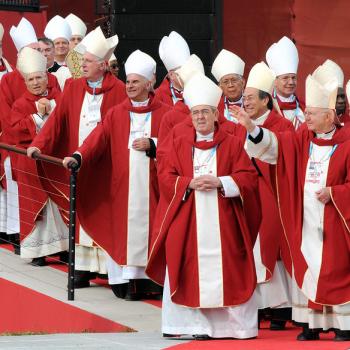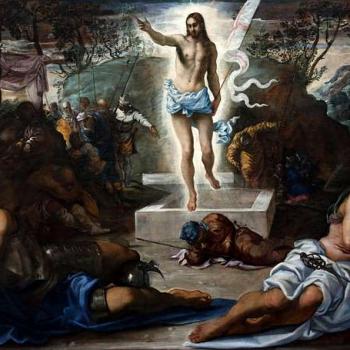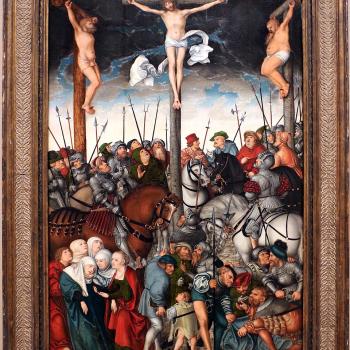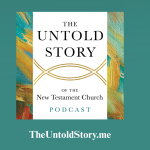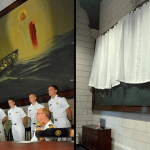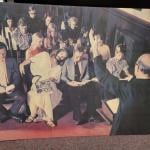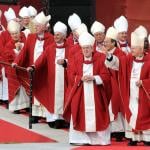The Christian author and cultural critic Anthony Esolen has written a remarkable new book entitled The Hundredfold: Songs for the Lord.
Rev. Harold Senkbeil of DOXOLOGY: The Lutheran Center for Spiritual Care and Counsel asked me to review it for the journal that organization puts out, which I was happy to do. The review will appear in SEELSORGER: A Journal for the Contemporary Cure of Souls Vol. 6, published by DOXOLOGY. The issue will be available later this year from Lulu.com. Other issues of Seelsorger, a term for a pastor engaged in the cure or the care of souls, can be purchased here.
Anthony Esolen is one of the most scintillating Christian cultural critics of our time. Instead of simply showing that the ideas and practices of secularist progressivism are wrong, he also shows how—unlike Christianity—they are lifeless and soul-numbing. A long-time literature professor, Esolen showed his poetic talents in an acclaimed translation of Dante’s Divine Comedy. Now in The Hundredfold, Esolen has written a Christian poetic masterpiece of his own.
Today, in this lifeless and soul-numbing culture, hardly anyone reads poetry anymore. In the Introduction to The Hundredfold, Esolen blames the rise of free verse for the decline in poetry’s popularity, going on to give us a seminar in meter, rhyme, and poetic form that can teach us how to read poetry and how to appreciate it once again.
I blame not just free verse for our current loss of poetry but also the tendency, encouraged by both modern poets and my fellow literature teachers, to turn a poem into a puzzle, something to be first deciphered and then interpreted, with the goal of finding the poem’s “hidden meaning.” Such an approach changes poetry reading from a pleasure to a drudgery. Other modern poems are just an effusion of emotions, a mere expression of subjective feelings. Then there are the poems, which pretend to be traditional but are not, that are sing-songy, sentimental, and idealized.
Esolen’s poems are nothing like any of these. Like all poems, they must be read slowly, with concentration and close attention. But the insight they give the reader comes from the language, the imagery, and the form of the poem, not some abstract meaning extracted from it. These poems are personal, even passionate sometimes, but they are objectively focused. They are wonderfully crafted formally, but the music of the verse is in service to its meaning, rather than distracting from it. And far from being sentimental and idealistic, they are tough-minded and grounded in reality, both that of the physical and the spiritual realms.
The Swiss Christian literary critic Denis de Rougemont has defined poetry as a “trap for meditation.” A poem is a work of art, made of words like a painting is made of daubs of paint, that forces the reader—by means of its imagery and structure—to meditate on something. That might be the twinkling little stars in the night sky, as in the children’s song, or stopping in the woods on a snowy evening as in Robert Frost’s poem of the same name, or the Fall of Man in Milton’s Paradise Lost. In each case, the poet is contemplating a truth, an experience, or an object, evoking it and reflecting on its meaning in such a way that the reader will meditate on it as well.
In this case, Esolen is trapping us into meditations on the Bible; that is, on Christ. That is, the Christ who saves us. The Hundredfold consists of 67 mostly-short lyric poems, each one based on a text of Scripture; 12 longer dramatic monologues depicting someone from the New Testament or its era who encountered Christ; and 21 hymns that the church can sing in worship to Christ. Add up the number of poems, and you get the 100 referred to by the title.
Some might be surprised to find work so Biblical, so Christocentric, so evangelical coming from a Catholic like Esolen, but there it is. While his Catholicism is evident sometimes, there is little to bother other Christians, and Lutherans will pick up on motifs of Law and Gospel, the theology of the cross, and the sacraments.
The intricately crafted lyric poems, with their enveloping rhymes, demonstrate how much meaning a good poet can condense into just a few lines. Each one begins with a text of Scripture as its heading. In ten lines or so, we jump from Eve to Mary, from the death of Isaac to the death of Joseph. Sometimes we jump from the Bible days to today, from child sacrifice to Moloch to today’s “terror” of birth. Or from the Bible text to the poet’s—and our—personal lives.
Interspersed with these lyrics are longer dramatic monologues. This genre, pioneered by the great Victorian poet Robert Browning, depicts a fictional or historical person speaking, telling something about his or her life. Thus, the poet is creating a character and telling a story, much like a novelist. Esolen writes his monologues (along with one dialogue and one trialogue) in blank verse, the unrhymed iambic pentamenter (“which is, please repeat three times, not free verse, and not even close”), the form that Shakespeare, Milton, and most other major English poets used.
Esolen depicts Mary, watching her young Son sleep; a grandfather who turns out to have been the boy who brought Jesus the loaves and fishes; Bartimaeus exultant in now being able to see; the healed demoniac from Gadara; Paul writing to his old teacher Gamaliel; and others who knew Jesus and can help us know Him.
Mixed in with these poems are hymns. These are actual texts written to classic hymn tunes (including some Lutheran gems, such as Luther’s “Christus Lag in Todesbunden” and Johann Franck’s “Jesu, Meine Freude”). Esolen, who has written a book on hymns (Real Music: A Guide to the Timeless Hymns of the Church), knows that while song-lyrics are poetry, they are poetry of a special sort, designed for collective devotion and collective performance, with metrical qualities that must tie-in to the music. These hymns measure up, and a congregation could sing them with great profit and delight. Their effect in this series of Biblical reflections and meditations on Christ is to give them a liturgical context, a response of praise, so that the whole collection is something like a worship service.
In the Introduction, Esolen says that The Hundredfold, while made up of individual poems, is itself one poem. And, indeed, the various poems come together into a unity. The Bible verses with their accompanying poems take us from Genesis through the Epistles. There is a progression in the dramatic monologues from Christ as a boy, through His ministry, through His passion, to Resurrection, and then to the proclamation of this Gospel by the Apostles.
The final poem of that series is entitled “Two Disciples of Saint John, on Patmos.” This dramatic Browning-style character study has three voices, not just one, making it, I suppose, a dramatic trialogue. The two young men are talking together as they watch the Beloved Disciple of Jesus, now elderly and close to death, sleeping. This ties together with the first monologue, in which Mary watches the young Jesus sleeping. This brings the sequence of poems full circle into a unity, even as it shows a movement from youth to age, from Jesus to the proclamation of Jesus. In the poem, as St. John sleeps, his mind is filled with memories of his days with Jesus, with snatches of his Holy Spirit-inspired gospel, and with vivid imagery that he would soon write down as the Book of Revelation. His two young followers think the old man is dying, but he surprises them by waking up and calling for parchment so that he could write out “the terrible apocalypse of love.”
The volume closes with this account of the writing of the last book of the Bible, followed by three lyrics on texts from that book, and, finally, a longer poem to conclude them all. Like the monologues, it portrays a person and his story, but this character is the author himself, telling about his encounter with Christ. Like the lyrics, it is intricately rhymed, but this rhyme scheme is the terza rima of The Divine Comedy, the three-line stanzas with interlocking rhymes with which Esolen’s literary mentor Dante wrote about his spiritual journey.
One of Esolen’s dramatic monologues is entitled “The Blacksmith to St. Luke,” in which an ordinary working man reports on his dealings with Jesus to the Evangelist researching his gospel. He tells about hearing Jesus talking about a sower whose seed produced “a hundredfold.”
The title of the book—that is, to the larger poem of which the others are a part—refers not only to the number of poems it contains. It is an allusion to Christ’s Parable of the Sower (Matthew 13:8). The seed is “the word” (Matthew 13:18-23), the Word of God that is the Gospel, which, received rightly, bears much fruit.
The implication is that, for Esolen, these poems represent “the Hundredfold” that the Word of God has produced in him. And that he hopes the words that he has sown in this book produce a “hundredfold” in those who read it.
Gene Edward Veith
Photo ILFamily Institute / YouTube via The Federalist.





